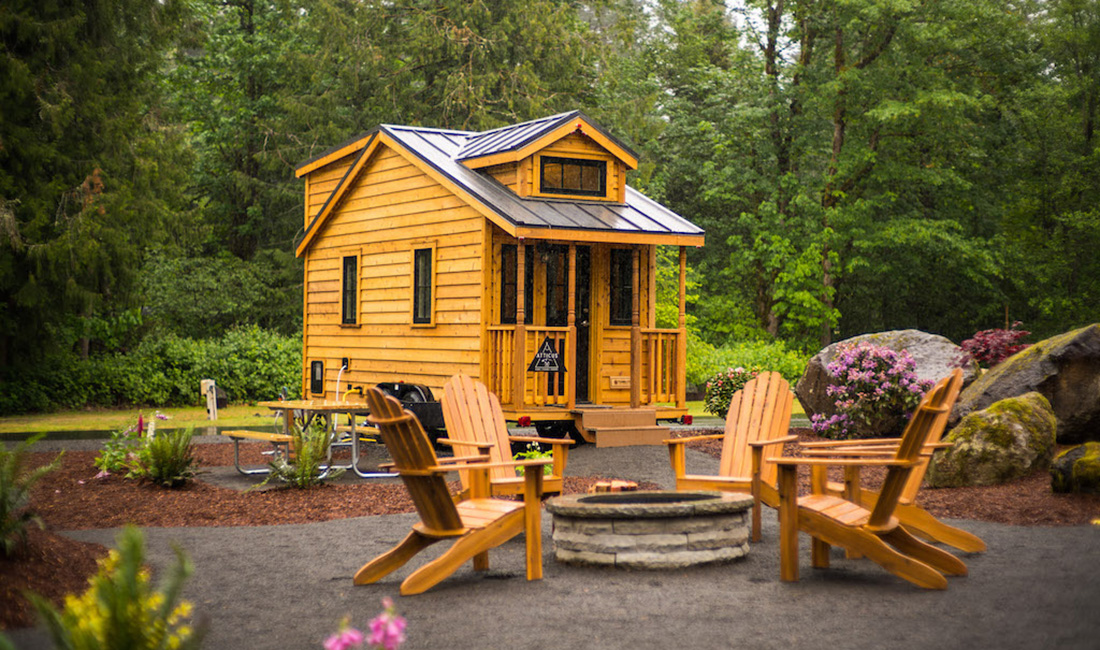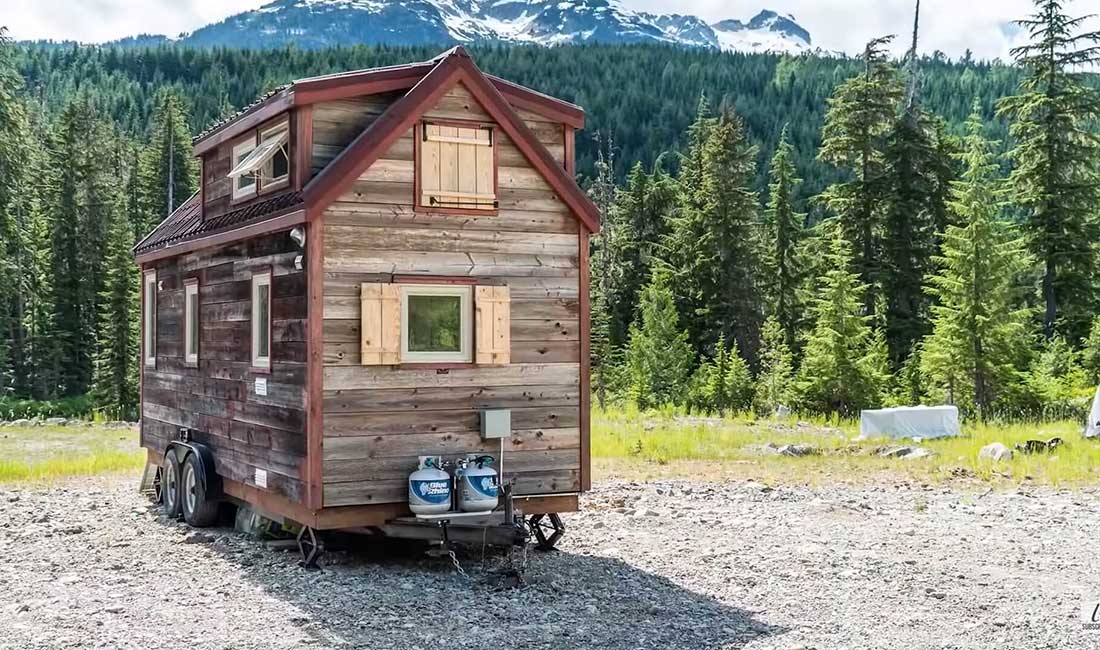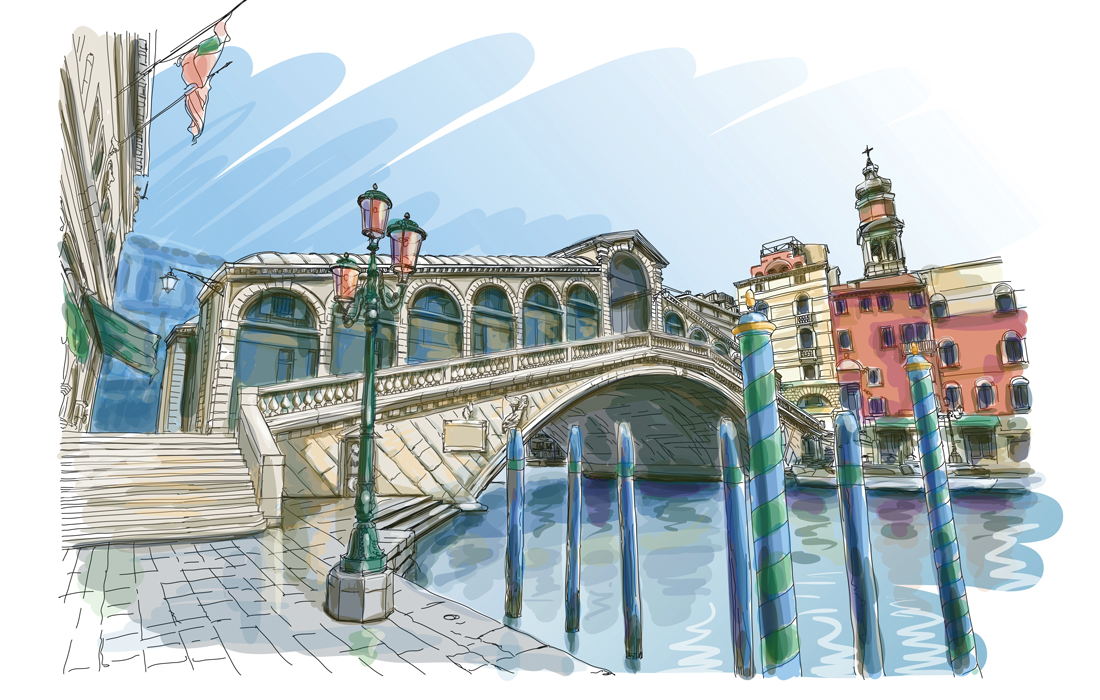
In the United States, the average size of a house has swelled over the last 70 years from about 1000 square feet in 1950 to over 2500 square feet in recent years. With the increase in size, costs also skyrocketed. Those who grew up in the 70s and 80s will remember home values averaging around $50,000. Now, young and hopeful homebuyers are contending with prices well over $100,000. From sprawling mass-produced McMansions to luxury Southern California homes for Hollywood’s elite, it’s quite easy to see how these numbers have grown so rapidly. Unfortunately for the next generations, this makes home ownership less of a rite of passage, and more of a pipe dream.

This is where the aforementioned Tiny House comes in – with homes that can cost around $20,000 dollars a pop, these new-age dwellings serve as a counter to the hyper-consumerist culture of the real estate market. Although the early resurgence of tiny houses in America began with niche architectural hobbyists, the 2008 depression renewed interest in tiny homes as financially and environmentally friendly alternatives to traditional tract houses. Suddenly, with some architectural help and a lot of creativity, anyone from amateur enthusiasts to professors could design a custom home to suit all their needs – no McMansion required!

As the idea caught on, more and more people who were tired of being stuck to a mortgage began to design and live in their own unique tiny houses. From bucolic dollhouse-like cottages to re-modeled school busses, the Tiny House People of youtube proudly started showing off their beautiful new homes and only propelled the movement further. Pretty soon, contracting companies that built tiny homes sprung up, and architects and designers began specializing in creating them.

Although the idea of living small seems new and foreign to many people in the US today, our ancestors might look at our 2500 square feet and wonder why we live like royalty. In fact, the true history of tiny homes dates back to the earliest humans, whose luxurious lean-tos and circular huts never exceeded a few rooms. Shelter was a necessity, but having three bedrooms and extra loft space…not so much. Early humans knew to conserve resources and energy, make do with what they had, and live more nomadic lifestyles – never putting too much stock into just one place. And while many of us, living in our large apartments and suburban houses, may have forgotten these lessons, the Tiny Home Dwellers certainly haven’t.

But living tiny doesn’t necessarily mean you’ll need to sacrifice your polished wood floors for a mud hut – on the contrary, many tiny houses have unique and even expensive features. Industrial chandeliers hanging from vaulted ceilings, large high-definition flat screen TVs , spa-like bathtubs, and full size kitchens can all be par for the course in some well designed modern tiny homes. One couple built a full sized deck, porch, and canopy that retracts into their tiny home, perfect for entertaining guests and having parties. Another tiny house builder incorporated beautiful rustic stained glass windows into his home design. In this way, the tiny home model is extremely versatile, customizable to any budget, style, or need, making it a solid option for those who can’t afford a traditional home or are facing housing insecurity. With living costs increasing rapidly, for many in the US, living nomadic or tiny is not a decision, but a financial reality.

Here, we reach Seattle, Washington, where the problems of extreme housing insecurity and homelessness has reached a breaking point. With money-making giant Amazon dominating the city, median home prices exploded to $820K last year. It’s a problem that will require large-scale policy action and a re-working of the system, but for Sharon Lee, executive director of the Low Income Housing Institute in Seattle, that wasn’t happening fast enough for the growing number of people on the streets. Using a loophole in the Washington housing code, Lee worked to create Othello Tiny House Village, taking what used to be a tent-city in a parking lot and building vibrant, stable tiny homes – each with electricity, heat, insulation, a locked door, and even WiFi. These tiny homes, costing about $2500 each, provide individuals struggling with housing insecurity a secure place to sleep and house their belongings, as well as a sense of dignity and community. Since 2017, Seattle has built 10 tiny home villages, and more cities are starting to move forward with their own villages.

Even with all the good press, there are still problems that many tiny home dwellers face and many obstacles for potential buyers to think about before they can simply pack up their belongings and hitch up a tiny house to their car (however tempting that may sound). From finding affordable storage options, negotiating insurance plans, and even figuring out where to send your mail, in many ways, the government and society just hasn’t caught up to the challenges tiny homes possess.
Perhaps the biggest hurdle that tiny home dwellers face is land costs and zoning regulations. In many cases, zoning regulations severely limit the places people are allowed to settle their tiny houses, with some states even outright banning them so as to not deal with the hassle. Additionally, even if homeowners find properly zoned land, renting or buying the property might be way too expensive to justify.
To fix this problem, homeowners in Lake Dallas, Texas, are banding together to create their own tiny home communities that follow zoning code and offer them a stable plot of land to live on. The Lake Dallas Tiny Home Village, which broke ground in February 2019, is just one in a growing number of tiny home neighborhoods that hope to bring together like-minded people who believe passionately in financial freedom, community spirit, and an ecologically friendly lifestyle. For these trailblazers, the Tiny House Movement offers a new perspective on what home can be
Santosha Veera
How single-family property investment can be your key to wealth.
HOW SINGLE-FAMILY PROPERTY INVESTMENT CAN BE YOUR KEY TO WEALTH









